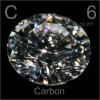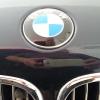Search the Community
Showing results for tags 'powerful'.
-
1.6L producing 256hp. Check in out here: http://www.sgcarmart.com/news/article.php?AID=5751
-
Another typhoon that badly hit Japan. http://www.channelnewsasia.com/news/asia/typhoon-hagibis-tokyo-central-japan-left-devastated-11995730
-
The secret deals and hidden assets of some of the world’s richest and most powerful people have been revealed in the biggest trove of leaked offshore data in history. Branded the Pandora papers, the cache includes 11.9m files from companies hired by wealthy clients to create offshore structures and trusts in tax havens such as Panama, Dubai, Monaco, Switzerland and the Cayman Islands. They expose the secret offshore affairs of 35 world leaders, including current and former presidents, prime ministers and heads of state. They also shine a light on the secret finances of more than 300 other public officials such as government ministers, judges, mayors and military generals in more than 90 countries. The files include disclosures about major donors to the Conservative party, raising difficult questions for Boris Johnson as his party meets for its annual conference. More than 100 billionaires feature in the leaked data, as well as celebrities, rock stars and business leaders. Many use shell companies to hold luxury items such as property and yachts, as well as incognito bank accounts. There is even art ranging from looted Cambodian antiquities to paintings by Picasso and murals by Banksy. The Pandora papers reveal the inner workings of what is a shadow financial world, providing a rare window into the hidden operations of a global offshore economy that enables some of the world’s richest people to hide their wealth and in some cases pay little or no tax.
-
Wow! Most Expensive now to Most Powerful Red Dot Passport Singapore passport becomes 'most powerful' in the world......CNA says one......... http://www.channelnewsasia.com/news/singapore/singapore-passport-becomes-most-powerful-in-the-world-9341920 INGAPORE: For the first time, Singapore is the single most powerful passport in the world, thanks to a little help from Paraguay. By removing visa requirements for Singaporeans, Paraguay helped Singapore edge out Germany for the top spot in a passport index developed by global financial advisory firm Arton Capital. Read more at http://www.channelnewsasia.com/news/singapore/singapore-passport-becomes-most-powerful-in-the-world-9341920
-
https://www.reuters.com/article/us-asia-storm-jebi/typhoon-kills-at-least-nine-in-japan-boats-move-tourists-from-flooded-airport-idUSKCN1LL05K Typhoon kills 10 in Japan, boats move stranded passengers from airport So many cars wasted due to havoc wreaked by Typhoon Jebi in Japan. Airport became jetty liao too
-
A petrol engine making more torque than diesel equivalent?? The dream have come true... Mercedes-AMG Details Most Powerful 4-Cyl Ever, Makes 416 HP 500 Nm Look for this engine in the A45, CLA 45, and GLB 45 in the near future. Mercedes-AMG finally announces the official specs for its new 2.0-liter turbocharged four-cylinder engine that goes under the internal designation M 139. In the higher-spec S trim, the mill offers 416 horsepower (310 kilowatts) and beats the previous-gen A45 with 375 hp (280 kW) to take the title as world's most powerful factory-offered four-cylinder engine ever available in a production vehicle. If we want to split some very thin hairs, the Mitsubishi Lancer Evolution FX-440 MR made 440 hp from its 2.0-liter four-cylinder, but production amounted to just 40 units exclusively for the UK. Specifically, the S version of the M 139 makes 416 hp at 6,750 rpm and 500 Newton-meters of torque between 5,000 and 5,250 rpm. The redline hits at 7,200 rpm. There's also a standard variant of the M 139 that produces 382 hp at 6,500 rpm and 480 Newton-meters between 4,750 and 5,000 rpm. The redline is the same 7,200 rpm. Both versions of the M 139 use a twin-scroll turbocharger. The S variant can produce up to 30.5 psi (2.1 bar) of boost, but the standard model goes to 27.6 psi (1.9 bar). To get into the nitty-gritty details, The M 139 weighs 160.5 kilograms. The four cylinders each have a bore of 83 millimeters and stroke of 92 millimeters. The mill features both direct injection and indirect injection through the intake manifold. There are two overhead camshafts operating on 16 valves, and the drive train is capable of tweaking the valve operation on both sides, in addition to Camtronic valve opening adjustment for the exhaust side. The M 139 engine will be available in a variety of models in the near future. The first of them to debut should be the new A45.
- 41 replies
-
- 12
-

-
- mercedes-benz
- mercedes
-
(and 6 more)
Tagged with:
-
How powerful? 2,000 PS and 1,700 Nm How fast? 0-100 km/h <3 seconds and top speed >340 km/h At first known only by its Lotus Type number - Type 130 - the car has been christened the Lotus Evija (pronounced 'E-vi-ya'). As a name it is derived from variations of Eve, and means 'the first in existence' or 'the living one'. It is highly appropriate; Lotus has an unquestionable reputation for its pioneering approach in both automotive and motorsport. As the first all-electric British hypercar, the Lotus Evija continues that story of innovation. It also signals the start of an exciting new chapter for Lotus under the stewardship of Geely, the fastest growing automotive group in the world. Lotus Cars CEO Phil Popham said: "Evija is the perfect name for our new car because it is the first all-new car to come from Lotus as part of the wider Geely family. With Geely's support we are set to create an incredible range of new cars which are true to the Lotus name and DNA." A stunning exterior inspired by nature The most striking element of the Lotus Evija is its exterior. From every angle the full carbon fibre bodywork is stretched taut, appearing shrink-wrapped over the mechanical components. Crouching low to the ground, with a ride height of just 105 mm, the pronounced muscular haunches envelop the teardrop cabin that sinks between them. Taking inspiration from the aeronautics industry, the exterior is a perfectly proportioned blend of fluid forms and crisp lines. This is clearly illustrated by the gently curved but sharp leading edge of the bonnet, which is reminiscent of so many classic Lotus road and race cars. Cues for the Lotus Evija's surface language was also taken from nature. Russell Carr, Design Director, Lotus Cars, commented: "During the initial design stage we spent many hours studying images of geological forms - rocks that had been carved by nature over the centuries. We believe we've captured these beautiful, intriguing and elemental lines within the Evija." True to Lotus founder Colin Chapman's core belief that every component should serve multiple purposes, the exterior design is also exceptionally efficient on every level. The most obvious example of this - and unquestionably the most dramatic element of the exterior - is the Venturi tunnel which pierces each rear quarter. Inspired by Le Mans race cars, they optimise air flow by directing it through the bodyshell. Aside from creating a breath-taking presence, this design concept - known as 'porosity' - aids the delivery of high-energy air flow to the rear of the car. This in turn counteracts the low pressure behind the car to reduce drag. Furthermore, the Venturi effect inside the tunnels pulls air through the rear wheel arch louvres, maintaining air quality in the diffuser. When viewed from the rear of the car, each tunnel is edged with a red LED to create a striking ribbon-style light signature. The result is a stunning visual effect that's akin to the afterburners on a fighter jet, especially when seen at night. As an extra detail, an LED hidden within each tunnel illuminates its interior. The directional indicators are incorporated into the corners of the ribbon, while the reversing light is provided by the illuminated 'T' of the 'LOTUS' wordmark above the integrated charging flap. Another key feature of the Evija's sophisticated aerodynamic system is the bi-plane front splitter. It's another illustration of form and function working perfectly in tandem. Designed in three sections, the larger central area provides air to cool the battery pack - mid-mounted behind the two seats - while the air channelled through the two smaller outer sections cools the front e-axle. Lotus aficionados may notice a respectful nod to the iconic Type 72 Formula 1 car, with its square front central section and two side wings. Active aerodynamics for exceptional downforce The Lotus Evija is the first Lotus road car to ever feature a full carbon fibre chassis. Moulded as a single piece for exceptional strength, rigidity and safety, the full length of the underside is sculpted to optimise downforce. It includes an integrated air diffuser which extends from under the B-pillars to the rear. Active aerodynamics are deployed in the form of a rear spoiler, which elevates from its resting position flush to the upper bodywork, and an F1-style Drag Reduction System (DRS). Both are deployed automatically in Track mode, though can be deployed manually in other modes. The absence of traditional door mirrors plays a part in reducing drag. Cameras integrated into the front wings are electronically deployed on unlock, while another camera built into the roof provides a central view. Images are displayed on three interior screens. Advanced pure EV powertrain means record-breaking power With target figures of 2,000 PS of power and 1,700 Nm of torque, the Lotus Evija is the world's most powerful production road car. Key to that exceptional power output is the 2,000 kW lithium-ion battery, supplied with its management system by Williams Advanced Engineering (WAE) as part of a joint venture with Lotus to collaborate on advanced propulsion technologies. WAE won a 2018 Queen's Award for Enterprise for translating its EV expertise from the race track to road-going vehicles. The battery pack is mounted centrally behind the passenger compartment, and its cover is visible through the glass rear screen. This positioning delivers significant advantages in terms of styling, aerodynamics, packaging, weight distribution, occupant comfort and dynamic handling. It also supports fast and convenient servicing and maintenance. Furthermore, the set-up has been designed so that in the future alternative battery packs - for example, to optimise track performance - can be easily installed. Power is fed from the battery pack to a bespoke in-line axial arrangement of two high-power density e-motors. These feature integrated silicon carbide inverters and epicyclic transmission on each axle of the four-wheel drive powertrain. The motors and inverters being supplied by Integral Powertrain Ltd. Four exceptionally compact, extremely light and highly efficient single-speed, helical gear ground planetary gearboxes transfer power to each driveshaft. Measuring a mere 100mm in depth, each gearbox comes packaged with the e-motor and inverter as a single cylindrical Electrical Drive Unit (EDU). With a target power of 500 PS per e-motor, this is the most efficient and elegant engineering solution to deploying so much power with precision. Torque-vectoring, enabled by the four e-motors, provides exceptional dynamic response and agility on the road. This fully automatic, self-adjusting system can instantly distribute power to any combination of two, three or four wheels within a fraction of a second. In Track mode the ability to add more power to individual wheels enables the radius of corners to be tightened, potentially reducing lap times. The Lotus Evija is equipped with ESP stability control to ensure safety in all road conditions, with further grip provided by the four-wheel drive system. A pure steering feel - a vital ingredient of every Lotus - is assured via an electro-hydraulic system. The car is built on a one-piece motorsport-inspired carbon fibre monocoque chassis. It is supplied by CPC, the Modena, Italy-based world-leader in composite technology. Constructed from multiple carbon plies, the manufacturing process is identical to that of an F1 chassis, and ensures the lightest, stiffest, safest and most technically advanced Lotus road car platform ever built. The total weight of the monocoque tub is a mere 129kg. This chassis, coupled with innovative engineering and clever packaging throughout every element of the Lotus Evija's powertrain, has contributed to the class-leading target weight of 1,680kg in its lightest specification. Precision performance guaranteed As with every Lotus, the Evija is 'For The Drivers' and its searing pace is delivered in one seamless, sustained surge. The 0-62 mph (0-100 km/h) sprint is completed in under three seconds, while the top speed is in excess of 200 mph (340 km/h). These headline statistics only tell part of the car's performance story. Matt Windle, Executive Director, Sports Car Engineering, Lotus Cars, explained: "The Lotus Evija has astonishing acceleration at higher speeds. It takes less than nine seconds to reach 300 km/h which is better than any other direct competitor." Further performance figures include acceleration from 100-200 km/h in less than three seconds, and 200-300 km/h in less than four seconds. Power can also be delivered over a sustained period. The car's advanced aerodynamics and four-radiator cooling package keep the battery at an optimum temperature. It means that the Lotus Evija is capable of being driven flat out with no derate for at least seven minutes in Track mode. Matt Windle continued: "With the Lotus Evija we have an extremely efficient electric powertrain package, capable of delivering power to the road in a manner never seen before. Our battery, e-motors and transmission each operate at up to 98% efficiency. This sets new standards for engineering excellence." As part of the development and validation process, Lotus and Williams Advanced Engineering have conducted thousands of hours of virtual testing and digital analysis. This comprehensive programme will ensure the car's meets its performance targets and exceeds customers' expectation. As a pure EV the Evija will be ultra-quiet at low speeds. During this time regulations require that it emits a digitally created sound - transmitted via a front-mounted speaker - which will alert pedestrians to its presence. While the flowing lines create a very organic look, Russell Carr, Design Director, Lotus Cars, believes that it is important that the car visually conveys its technical achievements. "When you look through the rear glass, you can see the battery pack cover and the in-board suspension. This link between the human and the precision engineering is essential for a Lotus. We want people to have the sense that they are engaging with the power and performance of the car. We refer to it as technology with soul." A revolution in charging Not only does the Lotus Evija feature the world's most powerful automotive drivetrain, it also boasts the world's fastest charging battery. Thanks to the partnership with Williams Advanced Engineering, the battery has the ability to accept an 800kW charge. Although charging units capable of delivering this are not yet commercially available, when they are it will be possible to fully replenish the battery in just nine minutes. Using existing charging technology - such as a 350kW unit, which is currently the most powerful available - the Evija's charge time will be 12 mins to 80% and 18 mins to 100%. The car's range is 250 miles (400 km) on the WLTP Combined Cycle, or 270 miles on the NEDC Combined Cycle. Lotus is in discussions with external suppliers on a charging solution for customers. The CCS2 charging socket is hidden behind a vented flap at the rear of the car. In the same location is a small plaque, reminding customers of the Britishness of the Evija. Motorsport-inspired interior is a technical tour de force The interior of the Lotus Evija is as dramatic as the exterior. Inspired by the technical precision of race car engineering, the dominant characteristic of the cabin is the 'floating wing' dashboard which can be glimpsed from outside through the windscreen. The design also echoes the porosity of the exterior. "The shape is inspired by the company's prototype racing cars of the late Fifties and early Sixties," explained Russell Carr, Design Director, Lotus Cars. "It has a beauty and an elegance to it, and represents a typically Lotus approach because it performs multiple functions. It houses the instrument panel and air ducts, and is also an integral structural support. It reinforces Colin Chapman's cast-iron rule that no Lotus component goes along for a free ride." Access to the cabin is through the two dihedral doors. Handle-free to preserve the sculpted exterior, they're operated via the key fob. It's the first time Lotus has used such doors, and while they make for a moment of dramatic theatre they also provide maximum space for getting in and out. An exceptional attention to detail - as people would expect from Lotus - is at the heart of the interior. For example, visible carbon fibre surfaces enhance the sense of light weight, while a thin metal band - engraved with the words 'For The Drivers' - runs centrally through the squab of both seats. Once in the car, a switch in the roof console closes the doors. The location aids the minimalist layout of the main control panel and prevents them being activated accidentally. Russell Carr, Design Director, Lotus Cars, explained it's in tribute one of the most iconic Lotus cars, commenting: "Versions of the Lotus Esprit Turbo featured a huge roof console in the late Seventies and early Eighties. It's not something you might expect on a contemporary hypercar but Lotus fans will love the connection." Inside, the cabin strikes the perfect balance between the precise functionality of a track car and the comfort of a road car. The driving position is fully adjustable to accommodate the greatest range of occupants. The elegant carbon fibre shell seats are hand-trimmed with thick Alcantara-finished pads, and feature manual fore / aft adjustment plus electric back operation. The steering column is manually adjustable for both rake and reach. Three-point seatbelts are fitted as standard, with four-point harnesses an option. Built into the bodyshell, close to the occupants' hip point, are two bespoke storage areas. The design of the steering wheel, similar to that found in an LMP or F1 car, further reinforces the Evija's sporting intentions. The outer ring is finished in Alcantara as standard with leather available as an option. Buttons are grouped in an intuitive manner and govern functions including phone use, cruise control and DRS deployment. Mounted centrally at the base of the wheel's hub is the mode controller. There are five modes - Range, City, Tour, Sport and Track - with various of the car's performance features activated or deactivated depending on which is selected. Ahead of the steering wheel is a state-of-the-art digital display, providing the driver with key information such as mode, battery charge and remaining range. It is the car's only screen, putting all necessary information in one place. The screen displays essential functions only, with information appearing as required when the appropriate button is pushed, then fading when no longer needed. Further controls are located on the floating 'ski slope-style' centre console, which features touch-sensitive haptic feedback buttons. Each is integrated in hexagonal recesses to help guide the driver's fingers. As the light plays over the surface it creates an almost organic visual effect. The driver can also interact intuitively with the car's technology via a control wheel. The honeycomb design of the buttons is replicated on indicator stalks and on the surface of the aluminium foot pedals. The Evija's cabin has been deliberately designed so that the occupants feel they are at one with the vehicle. "At the core of the appeal of any Lotus is that the driver is in sync with the car at all times and almost feels as if they are wearing it," said Russell Carr, Design Director, Lotus Cars. "Looking out from behind the wheel, it's a wonderfully emotional moment to be able to see the bodywork outside, both in front and behind you. That's something we hope to enhance in future Lotus models." Climate control and a premium infotainment system are fitted as standard. Customers can seamlessly integrate their smartphones via Apple CarPlay and Android Auto, accessing their own music and navigation. Extreme track performance and on-road comfort Calibrated to provide the optimum blend of extreme track performance and on-road comfort, the Lotus Evija's motorsport-derived suspension features three adaptive spool-valve dampers for each axle. Two are corner dampers with a third to control heave. These are mounted in-board to optimise the aerodynamic performance. They are manufactured by Multimatic, specialists in developing high-performance suspension technology for on-road, off-road and motorsport applications including Formula 1. Magnesium wheels provide optimum lightness and strength, and are sized 20 and 21 inches at the front and rear respectively. They are shod with Pirelli Trofeo R tyres, developed specifically to achieve ultimate performance. To deal with the Evija's extreme performance, the car is equipped with a forged aluminium AP Racing braking system with carbon ceramic discs front and rear. Technology: World-first laser lighting The Lotus Evija is the first production road car in the world to feature laser lights for both main and dipped beams. Produced by Osram, the lighting modules are very compact and will provide an outstanding view of the road or track ahead. The strikingly thin vertical headlamps provide the perfect balance of crystal-like beauty and a highly technical design. Inside the lenses, unique 'wing-like' elements form the daytime running lights and directional indicators. Technology: Connected to the cloud The Lotus Evija is the first Lotus to provide drivers with a full suite of digital connected infotainment, which will benefit from over-the-air software updates. A powerful on-board modem enables communication to the cloud, and the driver can interact with that data through a Lotus smartphone app. The app will enable drivers to monitor their Evija from anywhere in the world, for example, to check the battery charge status and driving range. It will also support remote use of air-con, to heat or cool the cabin ahead of the next drive. The Evija's infotainment system includes a chronograph to allow the driver to record their lap times. Connection to the cloud means they can view their performance while at the track and recall previous sessions through the app. The ultimate in personalisation Lotus will offer Lotus Evija customers an unparalleled level of personalisation, enabling them to specify the car exactly as they wish. This will include the opportunity to select unique paint finishes, interior trims and detailing. Marquetry-style badging will provide further bespoke opportunities. Lotus has developed the ability to inlay metal elements directly into the carbon fibre bodyshell, so that the badge sits completely flush with the bodywork. Currently the Evija carries a partial Union Flag badge on the C-pillar, signifying its status as a British-built hypercar. However, this could be another flag, a family crest or personal logo. "This marquetry-style badging is similar to that associated with traditional cabinet-making, where you inlay different colours of wood," explained Russell Carr, Design Director, Lotus Cars. "On the Evija it's really is up to the customer to choose whatever materials and designs appeal to them." Lotus is also developing a comprehensive programme of bespoke experiential activities for Lotus Evija owners. These will include VIP track days and other high-performance motorsport opportunities. Putting the customer first The Lotus Evija has been designed and engineered at Lotus' historic home in Hethel, UK, and production will begin in a new dedicated on-site manufacturing facility during 2020. A maximum of 130 examples will be built, guaranteeing exclusivity to match the stunning looks, ground-breaking technology and world-beating performance. They will be sold directly to customers by Lotus, with the global network of 220 retailers in support. Plans to service and maintain the car for each owner are currently in development. The Lotus Evija is priced from £1.7m plus duties and taxes. A £250,000 deposit secures a production slot. Built in Great Britain, great for Great Britain The UK is already recognised as a world-leader in high-performance automotive production. Lotus has been at the heart of that success for 71 years. The Lotus Evija will further cement the global status and reputation of this important UK industry sector, and its associated and diverse supply chain. However, as the first all-electric hypercar from a British car maker, the launch of the Evija sees Lotus deliver an opportunity for new and exciting expansion of the sector. Increasing consumer awareness and demand for the astonishing performance available through EV powertrains means new growth and new skills, and Lotus intends to be key player in that revolution. A true Lotus in every sense The Lotus Evija is faithful in concept and detail to the pioneering principles which company founder Colin Chapman used to build his first car in 1948. In common with every new Lotus, the Evija has been seen by members of the Chapman family. At a private viewing of the Evija, Hazel Chapman - Colin's widow - commented: "It's very beautiful and I can't wait to see it on the road." As with every Lotus, the Evija features the initials ACBC (Anthony Colin Bruce Chapman) in its badge. Chapman guided the company to astonishing levels of success on the road and track before his untimely death in 1982, aged just 54. Seven Formula One constructors' championships and six Formula One drivers' titles tell only a small part of the story. His pioneering approach to engineering led to an incredible range of world-first technical innovations. Type 14: the world's first composite monocoque production road car (Elite, 1957) Type 25: the world's first fully-stressed monocoque F1 car, and the first Lotus to win F1 world championship (1963) Type 72: the most successful F1 car of all time and the blueprint for F1 car design for many years (Championship winner in 1970, 1972 and 1973) Type 78: the world's first 'ground effect' F1 car (1977) Type 88: the world's first carbon fibre F1 car (1981) Type 92: the world's first active suspension F1 car (1983) Type 111: the world's first aluminium and bonded extrusion construction production car (Lotus Elise, 1995) Type 130: the Lotus Evija, the first fully electric British hypercar (2019)
-
WC is over so I'm quite boliao.. Recently see around my neighbourhood and on the roads got quite a few bmw / mercs or SUVs with P-plate. Just wondering if this is unique in SG given our car prices. In US and UK new drivers can easily get an old beat up used car for <$1k to practise with. For mcfers who started out with b&b cars and have upgraded to contis/SUVs or performance cars over the years, do you feel that driving b&b at the start made you a better and more confident driver in your bigger/faster car today? If you could go back in time with unlimited money, would you have jumped straight into a performance car once you got your licence? For those who have been lucky enough to drive a 'big' or 'powerful' car once you got your licence, upon reflection, would you have preferred to gain more experience first with something smaller and less powerful? Just for discussion..
- 31 replies
-
- 1
-

-
- new driver
- p plate
-
(and 6 more)
Tagged with:
-
OK just some news for you guys and girls out there doing laundry. I have found that Cold Storage is selling Arm and Hammer brand Washing Soda. It is kind expensive at 5.35/box (1.5kg) Mustafa is selling this Brit brand called Soda Crystals washing soda. Cheaper at 1.80/kg What the hell is it? Washing soda is Sodium Carbonate. It is a cleaning booster. I'll explain. The most widely available cleaning booster now is sodium bicarbonate. Cold Storage and now even NTUC sells Arm and Hammer sodium bicarbonate (baking soda). When sodium bicarbonate is dissolved in water, the pH is around 8. You can use this directly into your washing machine. It can clean out a lot of stuff and even remove detergent buildup. This is layer 1 offensive. Now if you got some cheap bad perfume that you cannot remove from with your laundry detergent, you use baking soda. Cannot remove but don't want to use bleach? Washing soda. When washing soda is dissolved into water, it gives pH 11! Powerful stuff. Deoderizes everything. Layer 2. Since it is pH 11, it is caustic so wash your hands thoroughly if you got some on your skin. Save your money buying those stupid color bleach. Use washing soda.
-
I can't believe to see this 3 wheelers causing so much dangers and damages http://www.youtube.com/watch?v=Hcq_3gkeIMI
- 6 replies
-
- 2
-

-
- rwd 3 wheels vehicle
- powerful
-
(and 1 more)
Tagged with:
-
NTU scientists discover a way to produce cheaper, more powerful solar cells (From right) Prof Subodh Mhaisalkar, Asst Prof Sum Tze Chien and Dr Nripan Mathews. The Straits Times Monday, Oct 21, 2013 Scientists from Nanyang Technological University (NTU) have discovered a way to produce cheaper and more powerful solar cells. Get the full story from The Straits Times. Here is the full press release from NTU: In the near future, solar panels will not only be more efficient but also a lot cheaper and affordable for everyone, thanks to research by Nanyang Technological University (NTU) scientists. This next generation solar cell, made from organic-inorganic hybrid perovskite materials, is about five times cheaper than current silicon-based solar cells, due to a simpler solution-based manufacturing process. Perovskite is known to be a remarkable solar cell material as it can convert up to 15 per cent of sunlight to electricity, close to the efficiency of the current solar cells, but scientists did not know why or how, until now. In a paper published last Friday (18 Oct) in the world's most prestigious academic journal, Science, NTU's interdisciplinary research team was the first in the world to explain this phenomenon. The team of eight researchers led by Assistant Professor Sum Tze Chien and Dr Nripan Mathews had worked closely with NTU Visiting Professor Michael Grätzel, who currently holds the record for perovskite solar cell efficiency of 15 per cent, and is a co-author of the paper. Prof Grätzel, who is based at the Swiss Federal Institute of Technology in Lausanne (EPFL), has won multiple awards for his invention of dye-sensitised solar cells. The high sunlight-to-electricity efficiency of perovskite solar cells places it in direct competition with Silicon solar cells and thin film solar cells which are already in the market and have efficiencies close to 20 per cent. The new knowledge on how these solar cells work is now being applied by the Energy Research Institute @ NTU (ERI@N), which is developing a commercial prototype of the perovskite solar cell in collaboration with Australian clean-tech firm Dyesol Limited (ASX: DYE). Asst Prof Sum said the discovery of why perovskite worked so well as a solar cell material was made possible only through the use of cutting-edge equipment and in close collaboration with NTU engineers. "In our work, we utilise ultrafast lasers to study the perovskite materials. We tracked how fast these materials react to light in quadrillionths of a second (roughly 100 billion times faster than a camera flash)," said the Singaporean photophysics expert from NTU's School of Physical and Mathematical Sciences. "We discovered that in these perovskite materials, the electrons generated in the material by sunlight can travel quite far. This will allow us to make thicker solar cells which absorb more light and in turn generate more electricity." The NTU physicist added that this unique characteristic of perovskite is quite remarkable since it is made from a simple solution method that normally produces low quality materials. His collaborator, Dr Nripan Mathews, a senior scientist at ERI@N, said that their discovery is a great example of how investment in fundamental research and an interdisciplinary effort, can lead to advances in knowledge and breakthroughs in applied science. "Now that we know exactly how perovskite materials behave and work, we will be able to tweak the performance of the new solar cells and improve its efficiency, hopefully reaching or even exceeding the performance of today's Silicon solar cells," said Dr Mathews, who is also the Singapore R&D Director of the Singapore-Berkeley Research Initiative for Sustainable Energy (SinBeRISE) NRF CREATE programme. "The excellent properties of these materials, allow us to make light weight, flexible solar cells on plastic using cheap processes without sacrificing the good sunlight conversion efficiency." Professor Subodh Mhaisalkar, the Executive Director of ERI@N said they are now looking into building prototype solar cell modules based on this exciting class of materials. "Perovskite-based solar cells have the potential to reach 20 per cent solar cell efficiencies and another great benefit of these materials is their amenability to yield different translucent colours, such as red, yellow or brown. Having such colourful solar glass will create new opportunities for architectural design," he added. The NTU team, consisting of six scientists, one postgraduate and one undergraduate, took six months to complete this fundamental research project, which was funded by NTU and the National Research Foundation, Prime Minister's Office, Singapore. [thumbsup]Up for these guys!!!
- 13 replies
-
- scientists
- discover
- (and 12 more)
-
www.sgcarmart.com/used_cars/info.php?ID=299211&DL=2430 OMV high. Est depreciation of $14k+ a year. Any opinions to drive this car for the remaining COE years then get high paper return. Not sure what's the maintenance like for old Audi.
-
Only country in the universe to JAIL men ( many could be jobless due to FT invasion ) when they cannot pay maintainence Editor
-
First time came across the mentioning of this Act in the thread XXX good buddy CEO saw not stepping down...WTF & link: http://www.mycarforum.com/index.php?showtopic=2672570 mentioned by MCF bro Duckduck in post #02. In actual fact, we strongly suspect that this Act, which has no equivalence elsewhere in the entire planet & throughout 9 galaxies, has been in existence for quite a while but just that not much was mentioned officially. By definition & in all practical purposes, this is the single most powderful Act ever created and the Terrorism Act actually pales in comparison. In this Act, all mistakes minor and major will be classified as honest mistakes (hence giving it the name Honest Mistake Act or HMA) & the person or party making them will be forgiven without any reprimands nor penalties imposed. Not even a slap on the wrist-type of warnings will be issued. It's origin could be traced to the S$388m wrongly paid out to a local telco years back and the man himself called this an honest mistake then and urged all to move along. That we believe led to the creation of HMA henceforth. In recent years, the HMA seemed to have been invoked many times succesfully and likely to be enhanced even further in years to come. The latest train disruption fiasco is another prime example that this HMA will be used again so at the end of the day all will be forgiven and life goes on... Ho ho ho, merry Xmas everyone!!!! [laugh]
-
Be who you are and say what you feel... because those that matter don't mind... and those that mind don't matter! Read This Slowly Jack took a long look at his speedometer Before slowing down: 73 in a 55 zone. Fourth time in as many months.... How could a guy get caught so often? When his car had slowed to 10 miles an hour, Jack pulled over, but only partially. Let the cop worry about the potential traffic hazard.... Maybe some other car will tweak his backside with a mirror. The cop was stepping out of his car, The big pad in hand.... Bob? Bob from Church? Jack sunk farther into his trench coat. This was worse than the coming ticket. A cop catching a guy from his own church. A guy who happened to be a little eager To get home after a long day at the office.... A guy he was about to play golf with tomorrow.... Jumping out of the car, He approached a man he saw every Sunday, A man he'd never seen in uniform. 'Hi, Bob. Fancy meeting you like this.' 'Hello, Jack.' No smile. 'Guess you caught me red-handed In a rush to see my wife and kids.' 'Yeah, I guess.' Bob seemed uncertain. Good. 'I've seen some long days at the office lately. I'm afraid I bent the rules a bit - just this once.' Jack toed at a pebble on the pavement. 'Diane said something about roast beef and potatoes tonight. Know what I mean?' 'I know what you mean. I also know that you have a reputation in our precinct.' Ouch. This was not going in the right direction. Time to change tactics 'What'd you clock me at?' 'Seventy. Would you sit back in your car please?' 'Now wait a minute here, Bob. I checked as soon as I saw you. I was barely nudging 65.' The lie seemed to come easier with every ticket. 'Please, Jack, in the car' Flustered, Jack hunched himself through the still-open door. Slamming it shut, he stared at the dashboard.... He was in no rush to open the window. The minutes ticked by.... Bob scribbled away on the pad.... Why hadn't he asked for a driver's license? Whatever the reason, It would be a month of Sundays Before Jack ever sat near this cop again. A tap on the door jerked his head to the left. There was Bob, a folded paper in hand Jack rolled down the window a mere two inches, Just enough room for Bob to pass him the slip. 'Thanks....' Jack could not quite keep the sneer out of his voice. Bob returned to his police car without a word. Jack watched his retreat in the mirror. Jack unfolded the sheet of paper. How much was this one going to cost? Wait a minute. What was this? Some kind of joke? Certainly not a ticket. Jack began to read: 'Dear Jack, Once upon a time I had a daughter.... She was six when killed by a car. You guessed it - a speeding driver. A fine and three months in jail, and the man was free. Free to hug his daughters, all three of them. I only had one, and I'm going to have to wait until Heaven before I can ever hug her again. A thousand times I've tried to forgive that man. A thousand times I thought I had. Maybe I did, but I need to do it again. Even now. Pray for me. And be careful, Jack, my son is all I have left.' 'Bob' Jack turned around in time to see Bob's car pull away and head down the road. Jack watched until it disappeared. A full 15 minutes later, he too, pulled away and drove slowly home, praying for forgiveness and hugging a surprised wife and kids when he arrived.... Life is precious. Handle with care. This is an important message; please pass it along to your friends. Drive safely and carefully. Remember, cars are not the only things recalled by their maker. Funny how you can send a thousand jokes through e-mail and they spread like wildfire, but when you start sending messages regarding the sanctity of life, people think twice about sharing. Funny how when you go to forward this message, you will not send it to many on your address list because you're not sure what they believe, or what they will think of you for sending it to them. Pass this on, you may save a life. Maybe not, but we'll never know if we don't try. May today there be peace within you. May you trust God that you are exactly where you are meant to be. 'I believe that friends are quiet angels who lift us to our feet when our wings have trouble remembering how to fly.' The life you save may be. Your own child or grandchild.
-
another tiko thread for the bros with female bosses. ----- A new survey has found that high-earning, successful women are every bit as willing as their male counterparts to use their power to attract younger lovers for quick flings. A new study has suggested that women are inherently no more virtuous than men. It's just that, in the past, they have lacked confidence or opportunity to stray. Like men, women are finding that power is a potent aphrodisiac, and they are giving in to the thrill of illicit lunchtime assignations and the sheer excitement that accompanies their transgression. Nor do they feel any more guilty or ashamed about it than a man would. Joris Lammers of Tilburg University in the Netherlands, who conducted an anonymous survey of more than 1,500 readers of a business magazine, found being powerful makes women more prone to be unfaithful. He questioned people, from top corporate executives to ordinary employees, about whether they had had affairs. They were asked how powerful they thought they were and quizzed on other factors including their feelings of confidence, and what they thought their risk of being caught was. The results showed a link between power and infidelity, regardless of gender. "The strongest predictors are not moral belief, but power and opportunity," Lammers said. "Power can undermine your morality and increase your risk-taking, and the effect of power on women is just as strong as on men." Source: ANI Image Source: Daily Telegraph Published May 24 2011
-
Halo I wonder if Mazda 2 aka mini compact economical car powerful? Today one bleu mazda2 SureFireQuick8088 tried to overtake and cut infront of me? I was astounded ! How can this guy even if not knowing physics or science, simply by the cos of his car would know he is way way below my 3 L car? Both in status, cost, power, image etc so funny ..
-
Friend just bought a new Skoda and wants to sell his Powerful Audophile SoundSytems as it cannot install into the new Skoda (Factory installed Headunit). Help him post here. == Used High End Car Audio === Pioneer HeadUnit P80RSii used 4mth, warranted updated. SGD$ 600 2 set Helix e136 2 way component speaker used for 1.5yrs. SGD$ 300 each 3" Mid speaker built in crossover used 4mth. SGD$ 480 Helix darkblue 4 channel amp used 8 mth. SGD$ 500 Lanzar 10inch Sub with box use 3 years. SGD$ 80 Or Whole set all of above at SGD$ 2K (negotiable) SMS 96938132 email [email protected]
-
Saw the specs that their latest Campro CPS put out 145HP. Wow, thats even more than some 1.8L engines!! Pretty impressive. Cause the rest I check out all around 125HP only. Of course don't compare against the old engines of the 90s like Honda B16 or 4AGE etc since these engines are no longer in production and do not meet current emission standards.
-
These two incidents made me realise that now a days, the internet is a very powerful tool..... Things posted on the net, they had said it was only noises, can be ignored,.... but now, they have to come out officially and explain....
-
Which is the most powerful Euro van with the quickest 0-100km/h timing? Enquiring on behalf of a mate. Can anyone advise?
-
http://en.espnf1.com/f1/motorsport/story/35830.html This should be the most powerful 1.6L of all time........ I don't know if it could exceed the F1 turbo engines used in the 80s back then but since engine technology has advance so much for the past 20-30yrs, there should be no reason why it should not match or even exceed it. I am thinking power of around 700-800HP from the 1.6L 4 potter at probably 12-15K RPM.
-
do you guys notice, Avante's 1.6L engine 121hp and 180N.m even higher than Honda Civic 1.8 only 174N.m what is the technology used in Anante? http://www.sgcarmart.com/new_cars/compare.php






.png)















